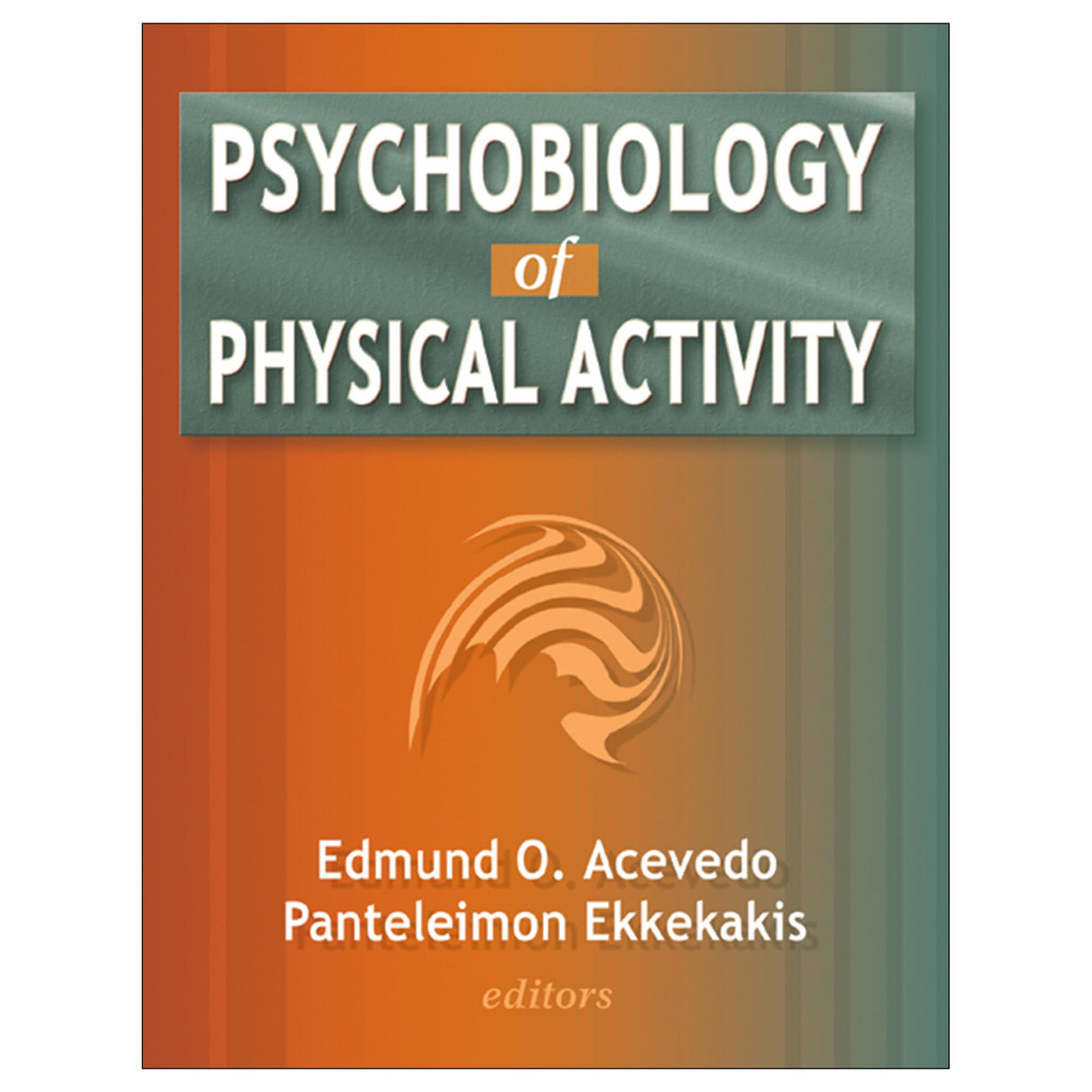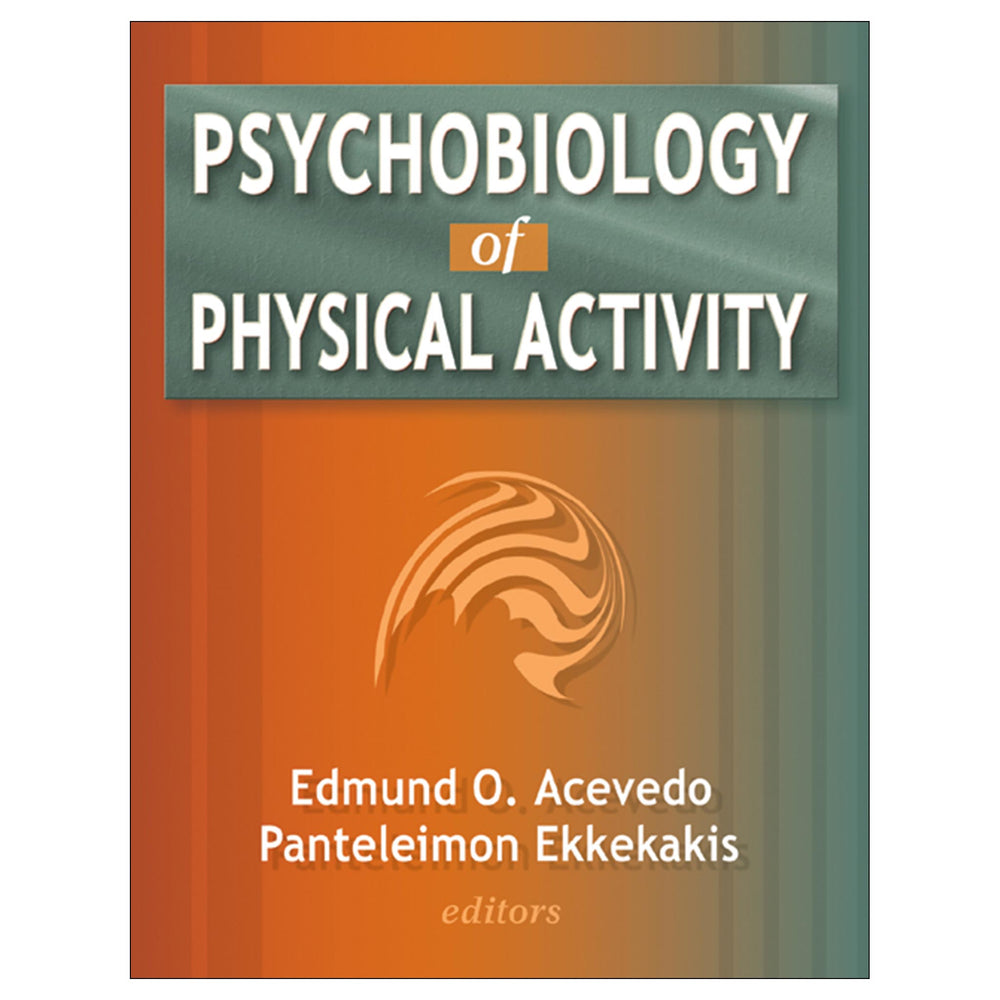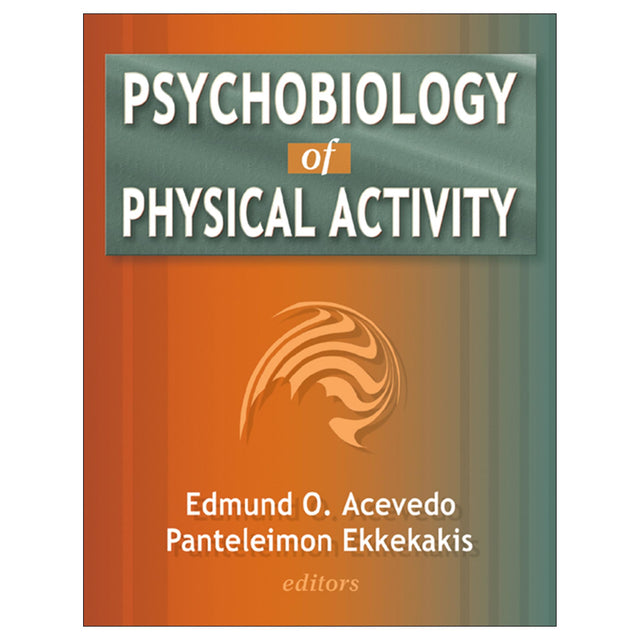Psychobiology of Physical Activity
$59.00 CAD
Psychobiology of Physical Activity fills a void in the scientific literature by addressing psychobiologic factors as they relate to exercise and sport. As the first resource of its kind, it sparks greater interest in the integration of topics in the growing area known as the psychobiology of physical activity. The text defines and expands the field by covering various disciplines, including psychophysiology, psychoneuroendocrinology, psychoimmunology, neuroscience, physiological psychology, and behavioral genetics.
The edited volume consists of 17 chapters written by internationally renowned scholars who consistently present a multilevel integrative approach to the study of human behavior in exercise and sport. The contributors share their cutting-edge research findings from diverse perspectives in chapters on physical activity and the brain, cognition, emotion, stress, pain, and human performance.
Part I, Introduction, traces the history of psychobiological investigations in the fields of sport and exercise psychology and reviews what is currently known about the workings of the central nervous system during physical activity.
Part II, Physical Activity and Cognition, examines recent evidence on the role of physical activity and fitness in preserving cognitive function in the aging human brain and the effects of exercise on neurogenesis, the formation of new neurons.
Part III, Physical Activity and Emotion, discusses the effects of exercise on emotion from multiple levels: the level of the synapse, the level of the human brain, and the level of the body as an integrated self-protecting system.
Part IV, Physical Activity and Psychosomatic Health, analyzes the role of exercise on central and peripheral factors related to cardiovascular and neuroendocrine stress reactivity, the function of the immune system, and pain.
Part V, Psychobiology of Human Performance, focuses on factors influencing human performance in competitive settings, including attention and cognition, biofeedback, and mental imagery.
As a professional reference, the book provides researchers and scholars with a valuable summary of cutting-edge research and up-to-date information. As a textbook, it challenges researchers and graduate students with an integrated approach to the study of human behavior in exercise and sport. In addition, Psychobiology of Physical Activity translates for sophisticated practitioners—such as clinical exercise physiologists—psychobiologic research into practice in the areas of exercise and sport.
Audience
Professional reference for exercise scientists, exercise and sport psychologists, and psychophysiologists; textbook for graduate students in psychobiology courses.
Part I: Introduction
Chapter 1. Psychobiology of Physical Activity: Integration at Last!
Edmund O. Acevedo and Panteleimon Ekkekakis
-The Progress of Scientific Investigations
-Secondary Ignorance and Dualism
-Sport Psychology
-Exercise Psychology
-The Present Volume
-References
Chapter 2. Physical Activity and the Neurobiology of Interoception
A.D. (Bud) Craig
-Research Methods in the Neurobiology of Interoception
-Primary Afferent Sensory Fibers From Muscle and Joint
-Second-Order Neurons in Lamina I
-Physiological Characteristics of Lamina I Neurons
-Selective Response of Lamina I Neurons
-Forebrain Projections of Lamina I Neurons
-Interoception in Humans
-Weaknesses and Limitations in the Literature
-Directions for Future Investigation
-References
Chapter 3. Brain Activation During Physical Activity
Jon W. Williamson
-Central Cardiovascular Modulation
-Brain Reorganization
-Weaknesses and Limitations in the Literature
-Directions for Future Investigation
-References
Part II: Physical Activity and Cognition
Chapter 4. Aging, Physical Activity, and Neurocognitive Function
Arthur F. Kramer and Charles H. Hillman
-Fitness and Behavioral Indices of Cognition
-Fitness Effects on Brain Function and Structure
-Potential Mechanisms
-Directions for Future Investigation
-References
Chapter 5. Exercise, Neurogenesis, and Learning in Rodents
Henriette van Praag
-Environmental Enrichment and Neurogenesis
-Exercise and Neurogenesis
-Other Anatomical Changes Associated With Exercise
-Exercise Improves Learning and Memory in Rodents
-Electrophysiological Changes Associated With Exercise
-Growth Factor Effects on Neurogenesis and Running
-The Role of Neurotransmitters in Running and Neurogenesis
-Directions for Future Investigation
-References
Part III: Physical Activity and Emotion
Chapter 6. Exertion and Pleasure From an Evolutionary Perspective
Michel Cabanac
-Sensations From Muscular Exertion
-Hedonicity of Muscular Exertion
-Hedonicity in Motivational Conflicts
-Conclusions
-References
Chapter 7. Affective Responses to Acute Exercise
Panteleimon Ekkekakis and Edmund O. Acevedo
-The Intensity-Affect Relationship
-The Inverted-U As a Dose-Response Model and Its Limitations
-Previous Dose-Response Findings and Weaknesses in the Literature
-The "Next-Generation" of Dose-Response Studies
-The Dual-Mode Theory
-A Putative Neural Pathway
-Directions for Future Investigation
-Conclusions
-References
Chapter 8. Physical Activity, Affect, and EEG Studies
Steven J. Petruzzello, Panteleimon Ekkekakis, and Eric E. Hall
-EEG Changes As a Result of Acute Exercise
-A Model for EEG-Exercise-Affect Research
-Potential Mechanisms Underlying Asymmetry
-Directions for Future Investigation
-Conclusions
-References
Chapter 9. Physical Activity and Neurotransmitter Release
Romain Meeusen
-Biosynthesis of Brain Monoamines
-The Effects of Exercise on Anxiety and Depression
-Exercise and Brain Neurotransmitter Concentrations
-Central Fatigue
-Neurotransmission and Overtraining
-Weaknesses and Limitations in the Microdialysis Literature
-Directions for Future Investigation
-Conclusions
-References
Part IV: Physical Activity and Psychosomatic Health
Chapter 10. The Cross-Stressor Adaptation Hypothesis and Exercise Training
Mark S. Sothmann
-Evolution of the Cross-Stressor Adaptation Hypothesis
-Basic Elements of the Stress Response
-Cross-Stressor Adaptation Hypothesis
-Psychobiological Testing of the Cross-Stressor Hypothesis in Humans
-Weaknesses and Limitations in the Literature
-Directions for Future Investigation
-Conclusions
-References
Chapter 11. Psychobiological Reactivity, Exercise, and Cardiovascular Health
Stephen H. Boutcher and Mark Hamer
-A Multifactorial Model of Cardiovascular Reactivity
-Cardiovascular Reactivity Assessment
-Reactivity Effects on Health
-Chronic Aerobic Exercise and Reactivity
-Acute Aerobic Exercise and Reactivity
-Directions for Future Investigation
-Conclusions
-References
Chapter 12. Exercise and Psychoneuroimmunology
Suzi Hong and Paul J. Mills
-The Immune System
-Exercise as a Model for Psychoneuroimmunology Research
-Enumerative Responses of the Immune System to Exercise
-Functional Responses of the Immune System to Exercise
-Cytokine Responses to Exercise
-Regular Exercise and Psychoneuroimmunology
-Directions for Future Investigation
-Conclusions
-References
Chapter 13. Central Regulation of Stress Reactivity and Physical Activity
Gregory A. Hand, Kenneth D. Phillips, and Marlene A. Wilson
-The Physiological Stress Response
-The Practical Significance of Studying Physical Activity and Stress
-Measures of Stress Reactivity
-Neural and Endocrine Systems That Respond to Stressful Stimulation
-Weaknesses and Limitations in the Literature
-Directions for Future Investigation
-References
Chapter 14. Physical Activity and Pain
Dane B. Cook
-Epidemiology of Musculoskeletal Pain
-Neurobiology of Muscle Pain
-Measurement of Muscle Pain
-Naturally Occurring Muscle Pain
-Analgesia During and Following Exercise
-Muscle Pain As a Barrier to Physical Activity
-Exercise As a Treatment for Chronic Musculoskeletal Pain
-Muscle Pain As a Limiting Factor in Sport Performance
-Directions for Future Investigation
-References
Part V: Psychobiology of Human Performance
Chapter 15. A Cognitive Neuroscience Perspective on Sport Performance
Bradley D. Hatfield, Amy J. Haufler, and Thomas W. Spalding
-Regional Cortical Activity in Elite Performers
-Contrasts of EEG Activity During Psychomotor Performance
-Effects of Training on Cortical Activation
-Performance Variation and Cortical Arousal
-Networking Between Cortical Association and Motor Regions
-Directions for Future Investigation
-Conclusions
-References
Chapter 16. The Psychophysiology of Biofeedback and Sport Performance
Dave Collins
-Measuring the Physiological Index
-Feedback Methods
-Selecting the Index
-Weaknesses and Limitations in the Literature
-Directions for Future Investigation
-Conclusions
-References
Chapter 17. The Psychophysiology of Imagery in Sport
Paul S. Holmes
-Theoretical Concerns
-Functional Equivalence
-Influencing Physiological Change
-Image Generation
-Imagery Modalities and Perspectives
-Neuroscientific Implications for Imagery Use by Sport Performers
-Indirect Evidence for the Mirror Neuron System
-Direct Evidence for the Mirror Neuron System
-Weaknesses and Limitations in the Literature
-Directions for Future Investigation
-Conclusions
-References
Epilogue. Future Challenges in Understanding Human Behavior
Edmund O. Acevedo and Panteleimon Ekkekakis
References
Index
About the Editors
"The text puts research into practice and is informative in its approach to the study of human behaviour and physical activity."
David R. Broom, PhD
British Association of Sport and Exercise Science





